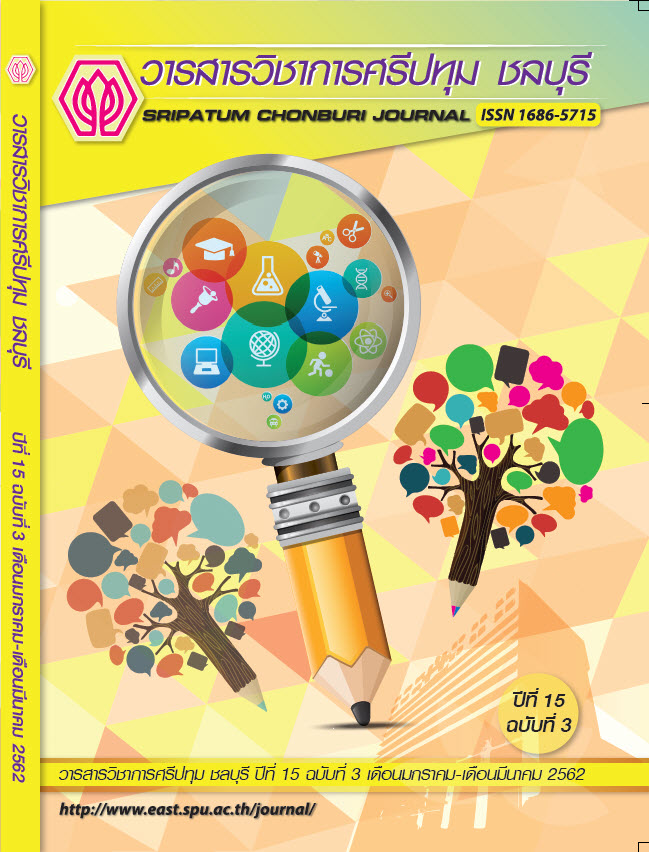LEGAL PROBLEMS IN INTRODUCTION OF FORENSIC EVIDENCE TO CRIMINAL CASES
Keywords:
forensic evidence, criminal casesAbstract
The objectives of this research are to analyze and compare examination proof in forensic evidence of in Thailand and foreign countries, also studying concepts and theories in introduction of forensic evidence to criminal cases, as well as approaches to solution to problems under the Criminal Procedure Code and Provision of Forensic Science Services Act, B.E. 2559. The research finds that the Criminal Procedure Code, Section 131/1, does not permit any party other than the Inquiry Official to request for examination and proof of any person, object or document by scientific method. As a result, the alleged offender does not have an equal opportunity to argue over the case and prescribe categories of the evidence, which is sent to be examined and proved whether any part of a person is allowed to be collected for examination thus the consent must be acquired from the person, hereby admissibility of the evidence in a criminal case may be affected. Apart from that, Provision of Forensic Science Services Act, B.E. 2559, does not prescribe any scope or procedures of the competent official in the said issue.
The recommendations of this research are procedures should be prescribed for permitting the victim or alleged offender to request the Inquiry Official for examination and proof of the forensic evidence at the inquiry stage, and the evidence should be classified into 2 categories: the evidence collected from both inside and outside of the body. Therefore, collecting evidence from outside the body does not require consent from whom the evidence is to be collected as in both the Criminal Procedure Code, Section 131/1, and Provision of Forensic Science Services Act, B.E. 2559, in order to solve the problem with collection of forensic evidence in criminal cases and achieve higher efficiency.
References
เข็มชัย ชุติวงศ์. (2551). คำอธิบายกฎหมายลักษณะพยาน. กรุงเทพฯ: นิติบรรณาการ.
ณัฐ ตันศรีสวัสดิ์ และชินวัต สุวรรณทิพย์. (2552). การรับฟังพยานหลักฐานทางวิทยาศาสตร์ (ออนไลน์).
เข้าถึงได้จาก: http://thailis-db.car.chula.ac.th/CU_DC/Journal/JournalDec2006/nov1.pdf [2561, 30 กันยายน].
เทพนฤทธิ์ พี่พิมาย. (2547). อำนาจพนักงานสอบสวนในการรวบรวมพยานหลักฐาน. สารนิพนธ์นิติ ศาสตรมหาบัณฑิต, คณะนิติศาสตร์ มหาวิทยาลัยธรรมศาสตร์.
พรทิพย์ โรจนสุนันท์. (2554). ความรู้เบื้องต้นเรื่อง DNA fingerprint. บทบัณฑิตย์, 52(2), หน้า 86-100.
ไพจิตร สวัสดิการ. (2547). การพิสูจน์ลายพิมพ์ ดี เอ็น เอ ในศาลในคดีอาญา. ดุลพาห, 51(3), หน้า 22-44.
วิฑูรย์ อึ้งประพันธ์. (2541). การใช้ประโยชน์จากผู้เชี่ยวชาญทางนิติเวชและทางนิติวิทยาศาสตร์เป็นพยาน
ในศาลกับการใช้ผู้เชี่ยวชาญในทางที่ไม่ถูกต้อง. ดุลพาห, 45(2), หน้า 175-182.
สุรนาท วงศ์พรหมชัย. (2551). การตรวจทางนิติวิทยาศาสตร์กับพยานหลักฐานในคดีอาญา. วิทยานิพนธ์
นิติศาสตรมหาบัณฑิต, คณะนิติศาสตร์ มหาวิทยาลัยธรรมศาสตร์.
อุดม รัฐอมฤต. (2544). การอ้างศักดิ์ศรีความเป็นมนุษย์หรือใช้สิทธิและเสรีภาพของบุคคลตามมาตรา 28.
กรุงเทพฯ: สำนักงานศาลรัฐธรรมนูญ.
Downloads
Published
Issue
Section
License
บทความทุกบทความเป็นลิขสิทธิ์ของวารสารวิชาการศรีปทุม ชลบุรี



